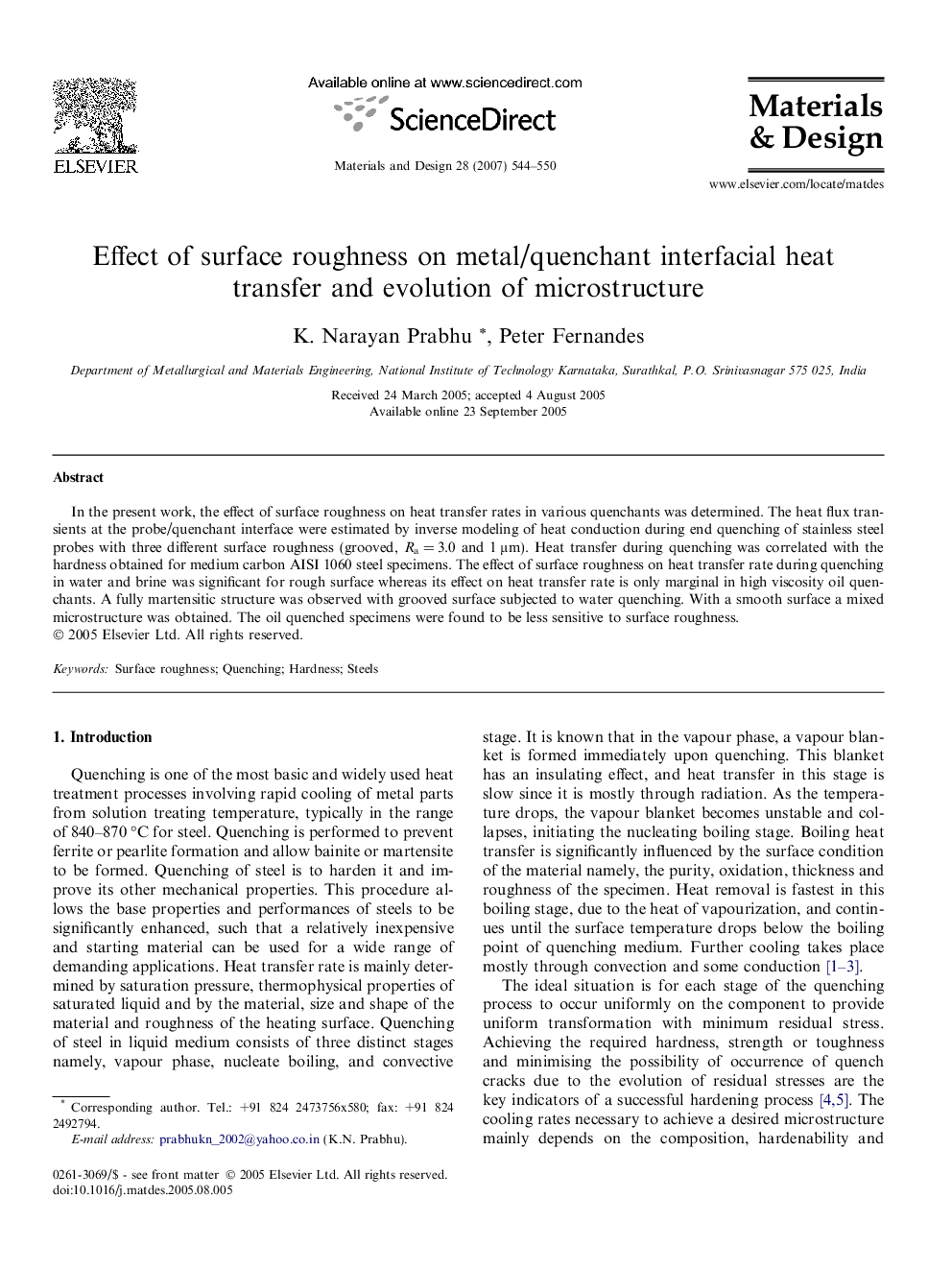| Article ID | Journal | Published Year | Pages | File Type |
|---|---|---|---|---|
| 833585 | Materials & Design (1980-2015) | 2007 | 7 Pages |
In the present work, the effect of surface roughness on heat transfer rates in various quenchants was determined. The heat flux transients at the probe/quenchant interface were estimated by inverse modeling of heat conduction during end quenching of stainless steel probes with three different surface roughness (grooved, Ra = 3.0 and 1 μm). Heat transfer during quenching was correlated with the hardness obtained for medium carbon AISI 1060 steel specimens. The effect of surface roughness on heat transfer rate during quenching in water and brine was significant for rough surface whereas its effect on heat transfer rate is only marginal in high viscosity oil quenchants. A fully martensitic structure was observed with grooved surface subjected to water quenching. With a smooth surface a mixed microstructure was obtained. The oil quenched specimens were found to be less sensitive to surface roughness.
